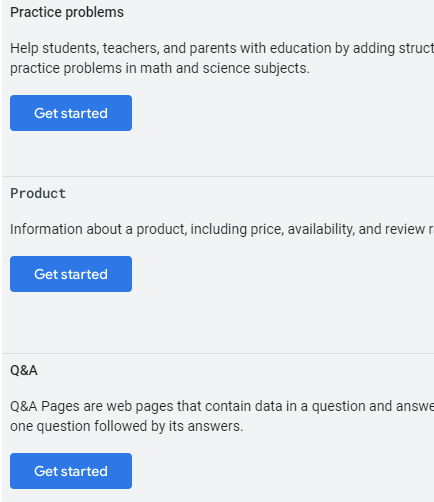What Structured Data to Use and Where to Use it? via @sejournal, @martinibuster
Google's John Mueller offers advice on how to choose structured data The post What Structured Data to Use and Where to Use it? appeared first on Search Engine Journal.

Google’s John Mueller answered two questions about structured data. While the first question was specifically about the medical niche, his answer is useful and applicable to websites in any niche. Mueller also explained how to use the Google Developer Help Pages to figure out which structured data is best to use.
How to Choose Structured Data for a Website
The question asked was about how to choose structured data and what the effect of it would be.
Mueller answered the question by pointing out that it’s not really about what structured data matches a page but rather the choice is about what kind of rich result is available for that page.
Structured data is highly extensible. Consequently, the Scehma.org site offers an ever growing list of different kinds of structured data that can fit nearly any web page.
However, Google only uses a fraction of the available structured data for the purpose of generating engaging search results like review stars, images in the search results and so on.
Google’s page on structured data explains:
“Google Search works hard to understand the content of a page.
You can help us by providing explicit clues about the meaning of a page to Google by including structured data on the page. Structured data is a standardized format for providing information about a page and classifying the page content; for example, on a recipe page, what are the ingredients, the cooking time and temperature, the calories, and so on.
Google uses structured data that it finds on the web to understand the content of the page, as well as to gather information about the web and the world in general.”
And that’s the direction that Mueller’s answer is coming from.
This is the question that was asked:
“How does Schema affect a medical niche’s website? What kind of structured data should be used there?”
John Mueller answered:
“So, I would primarily… when it comes to structured data, I would primarily focus on the things that we have documented in our developer documentation and the specific features that are tied to that.
So instead of saying, what kind of structured data should I use for this type of website, I would kind of turn it around and say, what kind of visible attributes do I want to have found in the search results?
And then from there, look at what are the requirements for those visual attributes, and can I implement the appropriate structured data to fulfill those requirements.
So that’s kind of the direction I would head there.”
Google Structured Data List of Rich Results Features
Google has published a very helpful page that shows the different kinds of rich results that can be shown for different kinds of pages.
The page is called, Explore the search gallery but it should really be called, List of Rich Results – Come and Get It!
The list of structured data that can be used to generate rich results is ordered alphabetically, beginning with the Article structured data and ending with the Video structured data.
Screenshot of Google’s Structured Data Gallery

This one page published by Google is very likely one of the best resources for helping publishers and SEOs identify the right structured data to use.
Does Every Page Need Structured Data?
The next question asked was about whether every web page needs structured data.
In general, there are some minor structured data like breadcrumbs structured data that are useful for nearly any page on a website.
Breadcrumbs are an easy win in terms of SEO and structured data. They help to produce an enhanced listing in Google’s search results.
So even though Breadcrumbs seems like a small thing it can be useful once a site begins to rank.
Google says this about breadcrumbs structured data:
“A breadcrumb trail on a page indicates the page’s position in the site hierarchy, and it may help users understand and explore a site effectively. A user can navigate all the way up in the site hierarchy, one level at a time, by starting from the last breadcrumb in the breadcrumb trail.
Google Search uses breadcrumb markup in the body of a web page to categorize the information from the page in search results. Often, as illustrated in following use cases, users can arrive at a page from very different types of search queries. While each search may return the same web page, the breadcrumb categorizes the content within the context of the Google Search query.”
But aside from that, Mueller’s advice to review which rich result is appropriate for a page is a good place to start.
This is the question:
“Does every page need schema or structured data?”
John Mueller answered:
“No, definitely not.
Like I mentioned, use the guide of what visual elements do I want to have visible for my page, and then find the right structured data for that.
It’s definitely not the case that you need to put structured data on every page.”
Citations
Review Google’s Structured Data Gallery
What Structured Data is Necessary?
Watch John Mueller answer the question from the 27:19 minute mark:

 Kass
Kass 







![7 Strategies That Will Get Powerful Results for Your Marketing and Sales Teams [Free Webinar on May 24th]](https://neilpatel.com/wp-content/uploads/2022/05/1362817_WEBINAR-7StrategiesThatWillGetPowerfulResultsForYourMarketingAndSalesTeams.jpg)
























